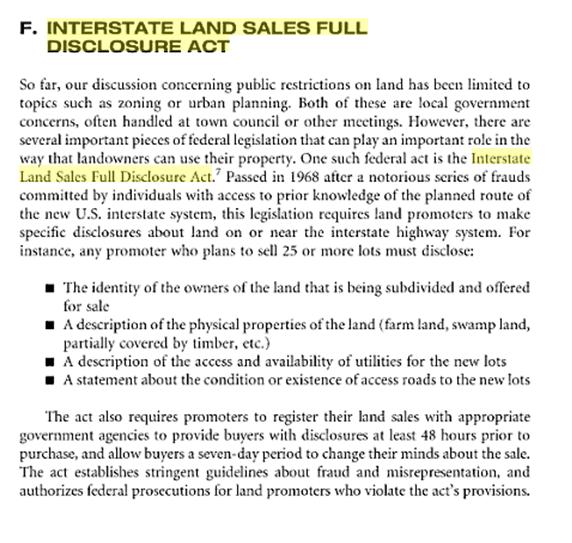Federal
_
Federal Legislation Over the years the federal government has passed some important legislation to counteract the fact that most buyers and sellers are not very well informed about the purchase and financing of property. Much of this legislation has become standard practice in real estate.
You are already aware of much of this legislation from your studies in previous courses. However, because these laws are so important, we’ll take some time to review them again here.
Fair Housing Act
Fair Housing law first began with the Civil Rights Act of 1866, which prohibited discrimination in housing based on race.
Title VIII of the Civil Rights Act of 1968 prohibited discrimination in housing based on race, color, religion or national origin.
In 1968, the Supreme Court in Jones v. Mayer ruled that discrimination on the basis of race is strictly prohibited. This means there can be NO EXEMPTIONS OR EXCEPTIONS with regard to race.
In 1974, the Housing and Community Development Act added sex to the list.
In 1987, a Supreme Court decision expanded the definition of race to include ancestry.
And in 1988, the Fair Housing Amendments Act added handicap and familial status.
As noted above, we can see that the protected classes of the Federal Fair Housing Act are race, religion, color, national origin, sex, ancestry, handicap and familial status.
The federal Fair Housing Act is administered by the Office of Fair Housing and Equal Opportunity under the direction of the secretary of Housing and Urban Development (HUD). Any person who believes he or she has been discriminated against may file a complaint with HUD within one (1) year of the alleged act.
Federal Legislation Over the years the federal government has passed some important legislation to counteract the fact that most buyers and sellers are not very well informed about the purchase and financing of property. Much of this legislation has become standard practice in real estate.
You are already aware of much of this legislation from your studies in previous courses. However, because these laws are so important, we’ll take some time to review them again here.
Fair Housing Act
Fair Housing law first began with the Civil Rights Act of 1866, which prohibited discrimination in housing based on race.
Title VIII of the Civil Rights Act of 1968 prohibited discrimination in housing based on race, color, religion or national origin.
In 1968, the Supreme Court in Jones v. Mayer ruled that discrimination on the basis of race is strictly prohibited. This means there can be NO EXEMPTIONS OR EXCEPTIONS with regard to race.
In 1974, the Housing and Community Development Act added sex to the list.
In 1987, a Supreme Court decision expanded the definition of race to include ancestry.
And in 1988, the Fair Housing Amendments Act added handicap and familial status.
As noted above, we can see that the protected classes of the Federal Fair Housing Act are race, religion, color, national origin, sex, ancestry, handicap and familial status.
The federal Fair Housing Act is administered by the Office of Fair Housing and Equal Opportunity under the direction of the secretary of Housing and Urban Development (HUD). Any person who believes he or she has been discriminated against may file a complaint with HUD within one (1) year of the alleged act.


